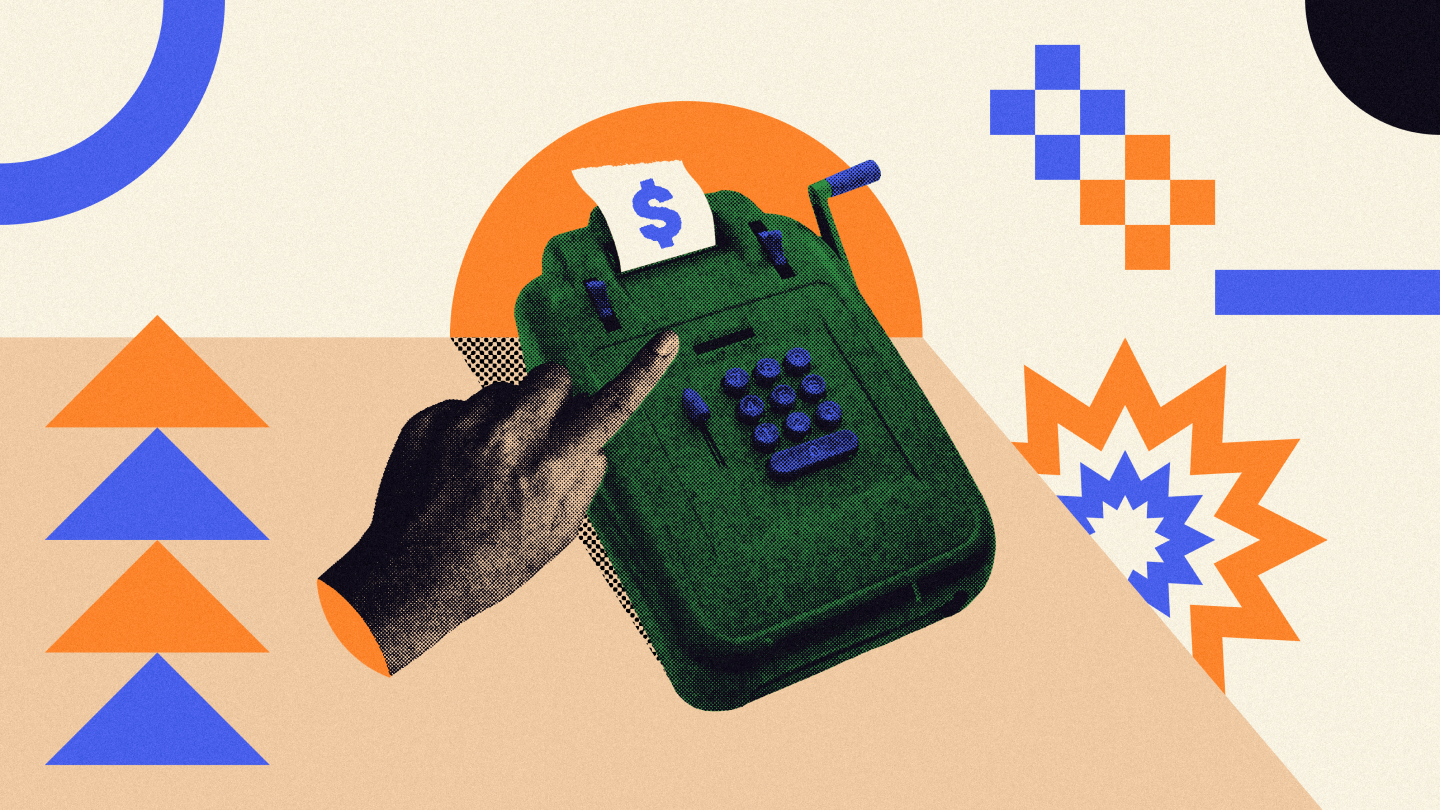What is a high-yield savings account & should you open one?
A high-yield savings account is a powerful tool to help grow your savings quicker than traditional accounts. You earn at a higher interest rate and can safely store away your money until you need it. Whether you’re saving for a large purchase, like a house or a car, or want to build an emergency fund for a rainy day, a high-yield savings account can make these goals a reality. High-yield savings accounts offer many perks and benefits that can be tailored to your specific situation and give you flexibility to manage your funds. But what is a high-yield savings account, and why should you consider opening one? Your savings journey starts with understanding the options available. Learn all about high-yield savings accounts, including how they work, why you should care about them, and what to consider when opening an account.
What exactly is a high-yield savings account?
A high-yield savings account is a savings account with higher-than-average interest rates on deposits. It is also called a high-interest savings account (a “HISA”). You earn interest at a much higher rate than traditional savings accounts; growing faster and reaching your savings goals quicker. The interest rate in a high-interest savings account is called the annual percentage yield (“APY”). APY is expressed as a percentage and refers to the interest you earn on your money in one year. It includes compound interest in the calculations. The higher the APY in the savings account, the faster your money grows. High-yield savings accounts allow you to access your cash whenever you want, whether it’s to transfer funds between accounts or withdraw money to make a purchase.
Is a high-yield savings account different from a HISA?
A HISA is a high-interest savings account, which is the same as a high-yield savings account. Both accounts refer to savings accounts with higher-than-average interest rates that pay compound interest.
How does a high-yield savings account work?
You earn compound interest in a high-yield savings account. You earn interest on the total account balance, which includes the principal amount and interest accrued from previous periods. You receive interest payments based on a predetermined compounding period, such as daily, monthly, quarterly, semi-annually, or annually. The compounding period determines the frequency of your interest getting paid out. For example, monthly compounding interest means you receive interest payments every month. You may see terms like APR and APY. APR is the annual percentage rate. It refers to the interest rate on your account and the fees you pay to a financial institution for borrowing money. APR is common for payments on car installments and money loans. APY refers to the annual percentage yield and reflects the real rate of return for your account for investment and savings accounts. It includes compound interest and compounding frequencies to estimate how much money you’ll earn. APY can also be referred to as AER, which stands for the annual equivalent rate. AER refers to the interest rate you earn over multiple compounding periods.
The main features of a high-yield savings account
A high-yield savings account has many perks to speed up your savings journey and ensure you have enough money to reach your goals. Here are the main features to consider when deciding whether you want to open an account.
Higher interest rates
One feature of high-yield savings accounts is the high-interest rate. High-yield savings accounts give you more interest compared to standard savings accounts. The higher interest rates are great for people with short-term savings goals who need to reach a target amount quicker. Since your account balance grows monthly from interest earnings, you’ll earn more interest month-over-month.
Liquidity
Liquidity refers to how quickly you can convert an asset to cash without losing significant value. The most liquid asset is cash because you don’t have to convert it into anything, and it’s always the closest to market value. Since you hold cash in your high-yield savings account, your funds are already liquid. You can typically transfer money in and out of your high-yield savings account whenever you want. Many people like using high-yield savings accounts for emergency funds because of the high liquidity. You don’t have time to wait for your assets to convert into cash, and you don’t have to with a high-yield savings account. You can easily access your money and pay for unexpected expenses.
What are the downsides?
While a high-yield savings account has many features and perks that make it a powerful tool to accelerate your savings and support your financial goals, it’s also important to consider its downsides. Understanding both the pros and cons helps you make a more informed decision about whether it’s the right type of account for you. Here are some cons of a high-yield savings account.
Not a daily banking account
If you’re looking for an everyday money account to pay bills, deposit paycheques, and make transactions, a high-yield savings account isn’t the best choice. Some financial providers charge fees for making transactions directly from a high-yield savings account or offer limited withdrawals every month. You can stash away money you want to save for a specific goal in a savings account, but you’ll probably want to find a chequing account as your everyday account.
Not great for long-term financial goals
While many people like to use a high-yield savings account for short-term goals and emergency savings, it’s not the best place for long-term financial goals. Other products may give you higher earnings, like stocks and ETFs. If you’re not planning on using your money within the next five years, consider investing some money. Keep in mind investing is riskier than saving money, and you may see your funds decrease as the financial markets fluctuate.
Fluctuating interest rates
The interest rate in a high-yield savings account can fluctuate over time without notice. Several factors influence high-yield savings account rates, like competition and Canada’s policy interest rate. This can lead to your interest rate increasing or decreasing as financial service providers respond to market fluctuations.
More requirements
High-yield savings accounts may have more requirements or restrictions than a standard savings account. For example, there may be minimum balance requirements, monthly withdrawal limits, transfer fees, or transaction fees. Some institutions may waive certain requirements based on your eligibility, but that’s up to their discretion. Some accounts also have a tiered interest rate structure. The interest you earn is tied to the amount of money you have in the account. Higher account balances typically earn at a higher interest rate than lower balances in these types of accounts.
Should I open a high-yield savings account?
A well-balanced financial portfolio includes a variety of accounts for different purposes. Everyone has financial goals they’re working towards, like making a down payment on a home, saving up for a vacation, starting a family, or paying for tuition. If you want to achieve these goals within the next five years, you may benefit from opening a high-yield savings account. Since your time horizon is shorter, you likely don’t want to risk putting your funds in investments that may or may not offer a good return. A high-yield savings account outpaces the growth of a standard savings account, helping you reach short-term financial goals quickly. You can access your funds by transferring between different accounts. Keep in mind that some institutions may charge fees for withdrawals and transfers. You earn interest payments based on the interest rate and compounding frequency. The higher the compounding frequency and interest rate, the more money you earn. Putting your money in a high-yield savings account is a great choice for risk-averse individuals as you receive interest payments from the institution and retain the value of your deposits.
What to consider when opening a high-yield savings account
You may see different terms when researching high-yield savings accounts or have questions about why you need one. It’s important to have a strong understanding of a high-yield savings account before opening an account. Here are some things to consider so you open the best one for your needs.
Interest rates
Several factors influence the interest rates of high-yield savings accounts, and these rates can change at any time. The rate you earn in your account today may not be the same interest rate you have next six months from now. Each financial services provider determines the interest rate they provide based on competitor benchmarking and economic conditions. You can compare interest rates from different institutions to find the highest rate available currently.
Introductory vs. ongoing rates
Introductory rates may expire, while ongoing rates don’t. Financial service providers may offer an introductory rate as a welcome offer to new customers or as a temporary bonus rate to retain existing customers. For example, an introductory rate may be 4%, while the ongoing rate is only 1%. While you earn more interest with the introductory rate, the promotional period usually only lasts for a few months. Some high-yield savings accounts offer ongoing rates that are higher than average. When comparing savings accounts, it’s important to note whether the rate is introductory or ongoing, so you get a more accurate estimate of how much interest you’ll earn on your deposits.
What a high-yield savings account is used for
You can technically use a high-yield savings account for any savings goal you have. Most institutions only require account holders to meet a minimum age requirement and be Canadian residents. Some accounts may have minimum balance requirements as well. Many Canadians like to use their high-yield savings account for short-term savings goals. It includes anything they want to purchase within the next five years, such as a wedding, a family vacation, or a new car. A high-yield savings account is also a great place for emergency savings. If you’re risk-averse and don’t like the fluctuations of the financial markets and investment products, you can also use a high-yield savings account to save for any long-term goals. However, you’re more likely to get better returns by investing your money in the long term.
Interest compounding frequency
Compounding frequency refers to how many times you receive the accumulated interest in your savings account. For example, monthly compounding means the financial service provider pays interest into your account monthly. The higher the interest compounding frequency, the more interest earnings you get each year. That’s because compound interest is determined based on your total account balance, which includes your deposits and interest earned in previous periods.
Account fees & minimum balances
Some high-yield savings accounts have account fees and minimum balance requirements. An account fee is the amount you pay each month to have your account with the institution. You may also have fees associated with fund withdrawals and transfers. Not all accounts have fees or minimum balance requirements. It’s important to check with the institution to ensure you’re aware of any requirements or restrictions and consider whether you want an account with these terms.
Where can I open a high-yield savings account?
With the rise of online-only financial service providers, you have more options to choose from to maximize your savings with a high-yield savings account. Each company can have its own innovative features and an online platform designed to provide a user-friendly experience. If you’re looking for a high-yield savings account with a high ongoing interest rate, security, and liquidity, look no further than the Neo High-Interest Savings account. Whether you’re a new or existing client with us, you earn a 4% interest rate¹ on every dollar deposited into your account. You can personalize multiple accounts with various saving goals and use the built-in smart tools to track your progress and saving habits. Easily access all the information you need to stay on top of your savings goals and make transfers or withdrawals from the Neo app. The application process only takes a few minutes, and you can complete it from wherever you are! Once the application goes through, you can start making deposits and earning 4% interest¹ on your money. Learn more about the Neo High-Interest Savings account today to kickstart your savings journey and make your financial goals a reality.
¹ Interest is calculated daily on the total closing balance and paid monthly. Rates are per annum and subject to change without notice.



